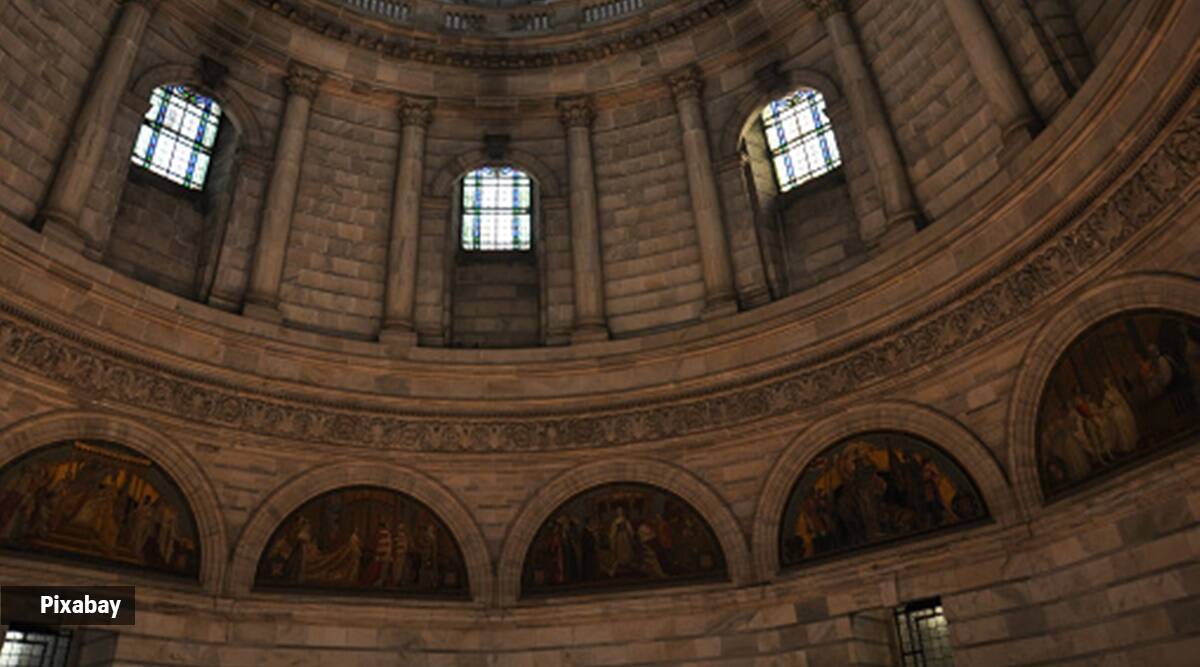SOURCE: THE INDIAN EXPRESS
Kolkata to get virtual Partition museum
The aim to build the museum is to memorialise eastern India's including Bengal' experience, with Partition as well as its aftermath and afterlives, in the most comprehensive manner possible, partition scholar Rituparna Roy said
Come next week, Kolkata will get a Partition museum, albeit a virtual one for now, showcasing the art and literature that reflects the bond between people across the barbed wires and the trauma the land endured.
Partition scholar Rituparna Roy, who is spearheading the Kolkata Partition Museum Project (KPMP), said the aim to build the museum is to memorialise eastern India’s including Bengal’ experience, with Partition as well as its aftermath and afterlives, in the most comprehensive manner possible.
“With this project, we are also equally trying to change the discourse around Partition. Because, by Partition, we understand rupture, violence and post-migration trauma, among others. It has continued for seven decades and more, and we understand why it has been so. But, it is also time to come out of it,” she told PTI
“There is also another aspect of Partition, which is continuity. Given the deeply divisive times that we live in, we want to remember that as well,” she added.
Roy, whose idea of setting up the museum germinated during her stay in Europe and visits to the War memorials and museums there, noted that West Bengal and Bangladesh have very different post-colonial trajectories.
“We are not denying that Partition happened, and there were reasons for that, there were fault-lines, for which it occurred. We are not saying that we will reunite like Germany. We will remember Partition, and put forward all the theories there are regarding it,” she said.
“But what we are saying is despite that, we have a cultural continuity, what we call the living heritage — language, literature, food, fabric, forms of arts. We don’t give much thought about these things as those have become an integral part of our lives,” she said.
Roy said that during her PhD and post-doctoral studies she felt that there was a Punjab bias in Partition studies of the sub-continent.
“In literature, a lot of works in Hindi and Urdu have been translated into other languages, so people have come to know more about their struggles. This is however, not the case with Bengal,” she said.
“The government at the Centre also meted out differential treatments — Punjab was given much more compensation, while it did not understand the problems of the east,” she said.
Roy said the idea of the museum first came to her during a visit to the Holocaust Memorial in Berlin.
“It was for the first time that the enormity of the crime against the Jews really hit me. Then it occurred to me that the impact of installation is so much stronger than any other medium,” she said.
“Holocaust and Partition happened in the same decade. There are so many memorials for Holocaust, why is it that we don’t have any public memorialisation of Partition? We have history writing, literature, films but where was the public memorialisation?” Roy said.
The virtual Partition museum, a collaboration between KPMP and Architecture Urbanism Research (AUR), is supported by Tata Steel, and will be a free repository for everyone.
“During the pandemic, we were just thinking how would we continue with our work. It was at that point of time that Aurgho Jyoti of AUR approached us with the idea of a virtual museum. So, they are designing and setting up the museum, while we are providing the content,” she said.
The museum, to be unveiled at a programme on August 24, will have year-wise archives, a virtual art gallery and an oral history section in which survivors of the Partition will share their experiences, among others.
“This will advance the work for a physical Partition museum, which we have planned to set up in the city. Once the work on the virtual museum is complete, we are hoping that through this project we will be able to attract more funding,” Roy said.
Asked if she has approached the government for funding or space to set up the physical museum, she said that she wants it to be a citizen’s initiative in line with European museums, without any political interventions.

